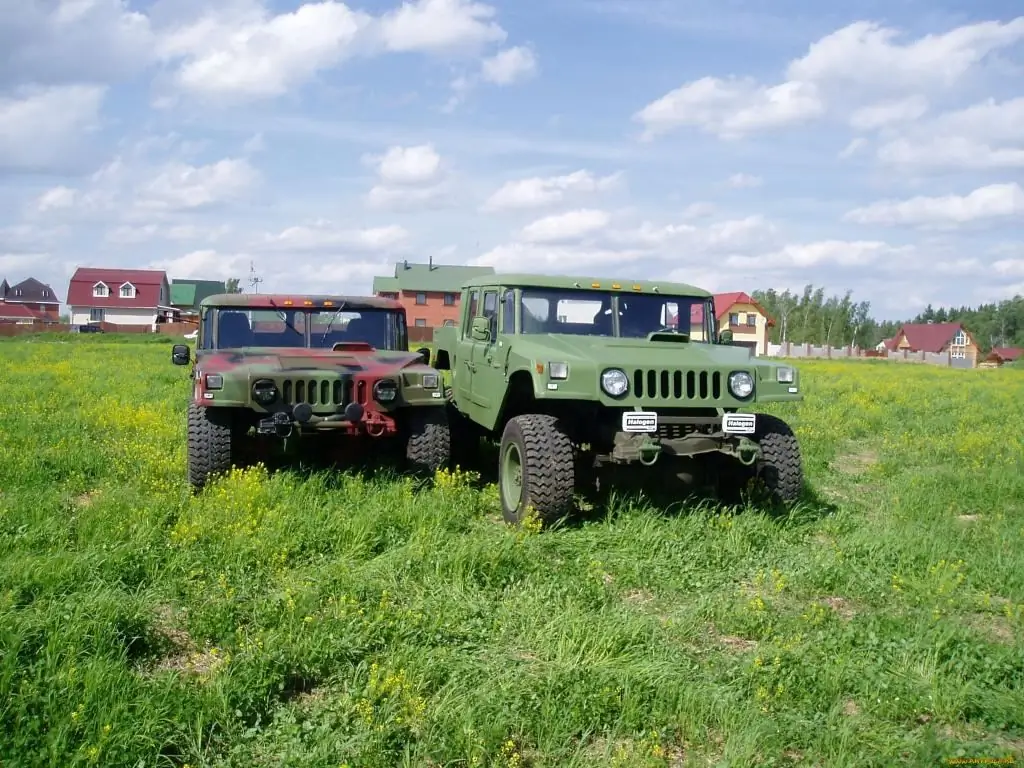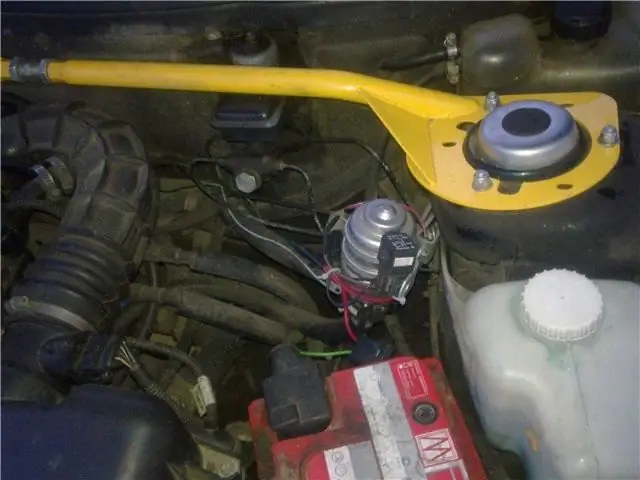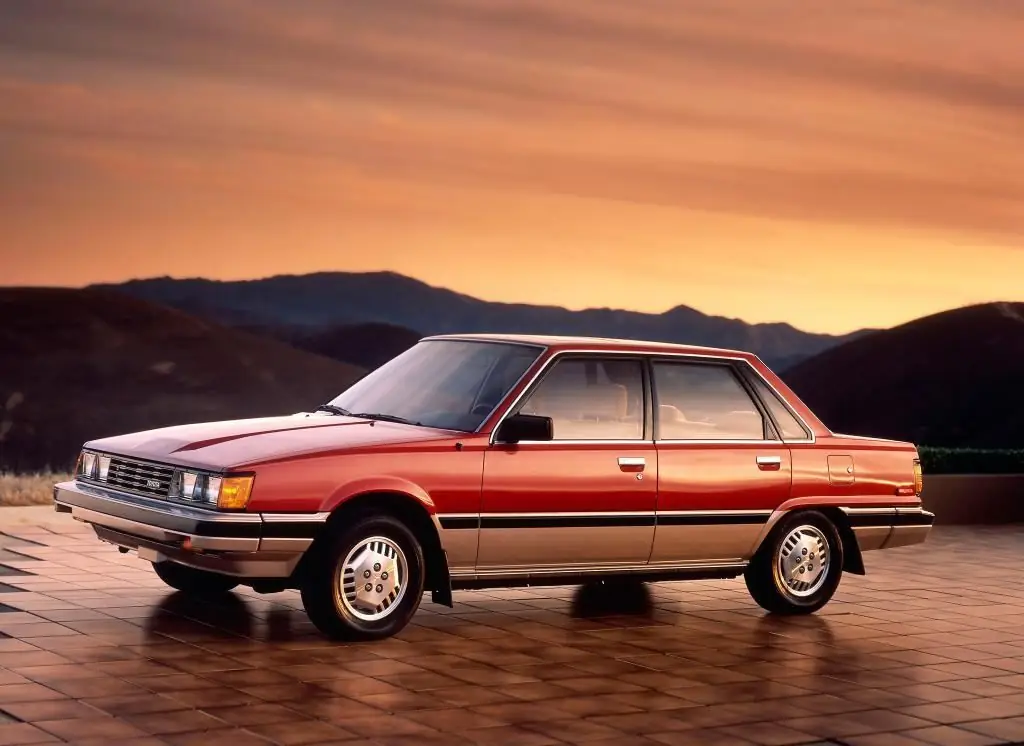2026 Author: Erin Ralphs | [email protected]. Last modified: 2025-06-01 05:35:55
The electric motor car began to move on the roads earlier than gasoline-powered cars (1841). At the end of the century before last, in America, various records were set with might and main, including the mileage from Chicago to Milwaukee (170 km), without recharging, maintaining a speed of 55 km/h.
At the beginning of the last century in the United States, electric cars sold one and a half times better than those running on an internal combustion engine, and only slightly inferior to "steam engines" (running on a steam engine). The First World War introduced a turning point in this trend, since military equipment worked better on gasoline, and it had no particular problems with refueling. Even such a genius as Tesla, who built a unique electric car in the thirties of the 20th century, accelerating to 150 km / h and, according to the inventor, charging right in the direction of travel, could not do anything. The "gasoline mafia" won, and the electric motor went out of fashion in the Western world for half a century.

Soviet electric car VAZ: history
While the star of electric motors was setting in the west, in the east, that is, in the USSR, it was just beginning to rise. In the mid-thirties of the last century, two electric vehicles were created in parallel:
- The first one is based on the GAZ-A car, which itself was the premiere car (phaeton type) of mass Soviet assembly.
- The second is a garbage truck based on the ZIS-5, which itself was the second largest truck produced in the pre-war years. Batteries weighing 1.4 tons were placed immediately behind the cab, “eating up” half the load capacity. The rest of the space was allocated for two garbage containers, each of which could take a maximum weight of 0.9 tons. The speed of the garbage truck was 24 km/h and the range was 40 km.
At the end of the war, electric vehicles began to be developed in NAMI, but things did not move beyond the experimental batch of NAMI-750 (capacity 0.5 tons) and NAMI-751 (capacity 1.5 tons)
Again, the questions of a car with an electric motor in the USSR returned in the early 70s of the last century, and AvtoVAZ workers achieved the greatest success. They worked and created:
- VAZ-E1101, nicknamed Cheburashka, with front-wheel drive.
- On its basis - the open controller VAZ-E1101.
- A fundamentally new passenger car VAZ-1801, nicknamed Pony.
- The first electric car that reached serial production based on the VAZ-2102 (project 2801 Electro).
- Trucks were also tested - VAZ-2301 and VAZ-2313, as well asvans VAZ-2702 and VAZ-2802.

In the early 80s of the last century, five dozen electric vehicles based on the VAZ-2102 were produced. They tried to convert the famous "nine" (VAZ-2109E), "Oka" (VAZ-1111E) and "Niva" (VAZ-2131E) to electric traction. However, nothing went into the series. It became absolutely clear that converting serial gasoline cars into electric cars is a hopeless business. However, developing a fundamentally new idea from the very beginning is even more troublesome. And they decided to give the VAZ-2102 (station wagon) under the cause of electrical progress, having built a traveling van out of it.

Electric car VAZ-1801 "Pony"
The implementation of the VAZ-1801 project began with the creation of a special chassis, fully taking into account the originality of its mover. He was nicknamed the small Cheburashka, since at first they took advantage of the developments of the corresponding project - VAZ-E11011. To work in open large spaces of resorts, parks and so on, it was required not just an electric car, but an open car for working in the summer. They became the project 1801, nicknamed the Pony because of the characteristic features of the appearance. Low mount and rear-wheel drive Pony received only for reasons of weight reduction. Something, including the suspension, was taken from the VAZ-2108, which at the same time was under development. The controls were simple - a single-spoke steering wheel, two pedals and a handbrake.
Pony and Moscow Olympiad
Solve the problem of serial production of the electric car VAZ "Pony" to the Moscowthe Olympics failed, and then the first prototype burned down. So the project would have been canceled if it were not for the 60th anniversary of the Soviet automotive industry. At the exhibition dedicated to him, everyone wanted to show something new, original. Here at AvtoVAZ, they remembered the project 1801. The electric car was almost ready for launch, and at a speed of 40 km / h it could travel up to 120 km without recharging. Both existing copies were updated, the Pony logo was put on, the single-spoke steering wheel was replaced with a two-spoke steering wheel - and the exhibition copies were ready. "Pony" made a successful debut at the exhibition held in Moscow at VDNKh, but it was the swan song of the project. One car was sent to the AvtoVAZ museum, and the second one was sent to work at the plant's football stadium.
VAZ-2801 "Electro"
The first two prototypes of the VAZ-2102 electric car were built in the mid-seventies of the XX century. To equip cars with electric motors weighing more than 1/3 tons, the rear seats and doors had to be removed. According to the test results, this project (VAZ-2801 "Electro") by V. F. Baranovsky was positively evaluated and recommended for production. But work began in 1981, when a single batch of electric cars was produced based on the serial model VAZ-2102 (project 2801). Taking into account prototypes, a little more than fifty pieces of such cars were produced, which were a closed 2-door van with corrugated panels instead of rear side windows.
Almost all of them had the inscription "Electro" on the sidewalls, and in addition to appearing at various exhibitions, they delivered breakfasts and postal items at AvtoVAZ and inone of the Moscow car parks. But most of them were sent to Ukraine (Kyiv, Zaporozhye, Mirgorod and so on).
Disadvantages of VAZ electric cars
Like all electric vehicles of the 21st century, the main drawback of the VAZ electric car is a small power reserve on a single charge. It was up to 110 km at a speed of no more than 40 km / h. Electric motors PT-125 (25 kW) and PT-146 (40 kW) made it possible to move at a maximum speed of 87 km/h.

In addition, there was virtually no recharging network, on which charging was fast, and electric vehicles were mostly charged from a conventional power grid. Therefore, the recharging process could take up to 20 hours, and the cost of electrical equipment, especially the battery, was quite high. Reviews say that it is simply impractical to use such cars.
Specifications
Electric car VAZ-2102E (project 2801), produced in the USSR, had the following characteristics:
- Manufacturer - AvtoVAZ.
- Number of seats - 2.
- Number of doors - 3.
- Engine - PT-125 with a capacity of 35 l / s.
- Maximum speed - 87 km/h, acceleration to 30 km/h in 4 seconds
- Power reserve without recharging - 110 km at a speed of 40 km/h.
- Length - 4 m.
- Width - 1.6 m.
- Height - 1.4 m.
- Clearance - 0.17 m.
- The weight of the car is 1.6 tons curb and almost 2 tons full.
- Battery weight - 0.38 tons.
- Loading capacity - 0.34 tons.

Electric car VAZ Ellada
VAZ electric car, built in 2011 on the basis of Lada Kalina, accelerates to 140 km / h and without recharging in the warm season can travel one and a half hundred kilometers (at sub-zero temperatures, the power reserve is reduced by 1/3). Western analogues have an indicator 2-3 times higher, but the cost is ¼ less. How much does a VAZ "Kalina" electric car cost? The price of Kalina Ellada is 1.25 million rubles, while the Mitsubishi i-MiEV is around 1 million rubles. The development of this project cost more than 10 million euros, and it clearly did not pay off. Of the hundreds of such electric cars scheduled for delivery in 2013-2015, only five were delivered to the Stavropol Territory. The plant nevertheless produced the first series of 100 vehicles, but sold Ellada only to legal entities (in order to facilitate the collection of information on operation) at a price of 960 thousand rubles.

Having a maximum speed of 130 km/h, this Kalina does not accelerate quickly (up to 100 kilometers in 18 seconds). Reviews say that the low noise of this process is surprising. The handling and smoothness of the VAZ Ellada electric car are significantly better than the standard Kalina (the weight increased by a centner and the low center of gravity helped). The operation of five electric vehicles in the taxi companies of the Stavropol Territory showed their unpretentiousness and low cost of maintenance. Due to the small number of working stationary electric stations, they are recharged mainly at night from a conventional power grid. Eight is enough for a full charge.hours.
Prospects for release
At the same time, the prospects for the Kalina Hellas electric car are very vague. Stationary electric filling stations in sufficient quantity are not expected in Russia, and connecting an air conditioner to the internal network of a car in summer, and electric heating in winter and always a radio tape recorder will significantly, that is, more than 2 times, reduce the power reserve.
It's interesting that in Lithuania, "homemade" craftsmen, taking the VAZ-2108 "Electro" as a model, made a VAZ electric car from an old serial VAZ-2106 with their own hands.

By dismantling the internal combustion engine and putting an electric motor, five batteries and a power controller on the car, they showed a video trip at a speed of 40 km/h.
Recommended:
Russian "Hammer": characteristics, photos and history of creation

Russian "Hammer": specifications, base, history of creation, modifications, photos. Russian "Hammer" based on GAZ-66: description, types, operation, stages of creation, features. Russian military "Hammer": parameters, pros and cons
GAZ-11: photo and review of the car, history of creation, specifications and interesting facts

GAZ is the largest automaker that started manufacturing products in the city of Nizhny Novgorod. In the first years of its work, GAZ produced "Ford" products. For the realities of the Russian climate, the engine of this series of cars did not fit well. Our specialists solved the task, as always, quickly and without unnecessary troubles, taking as a basis (actually copying) the new GAZ-11 engine, the American lower-valve Dodge-D5
Electric pump for warming the car interior. "Gazelle", electric pump: characteristics, repair, connection, reviews

Most modern cars use an electric pump to provide cooling. "Gazelle" is equipped with an excellent device of this type, which can be installed on other cars
Electric scooter - reviews. Electric scooter for adults. Electric scooter for children

No matter which electric scooter you choose, it will allow you to enjoy relaxing walks in the park or immerse yourself in the world of outdoor activities
Toyota Camry lineup: the history of the creation of the car, technical characteristics, years of production, equipment, description with photo

Toyota Camry is one of the best cars made in Japan. This front-wheel drive car is equipped with five seats and belongs to the E-class sedan. The Toyota Camry lineup dates back to 1982. In the US in 2003, this car took the first position in sales leadership. Thanks to its development, already in 2018, Toyota released the ninth generation of cars in this series. Model "Camry" is classified by year of manufacture

